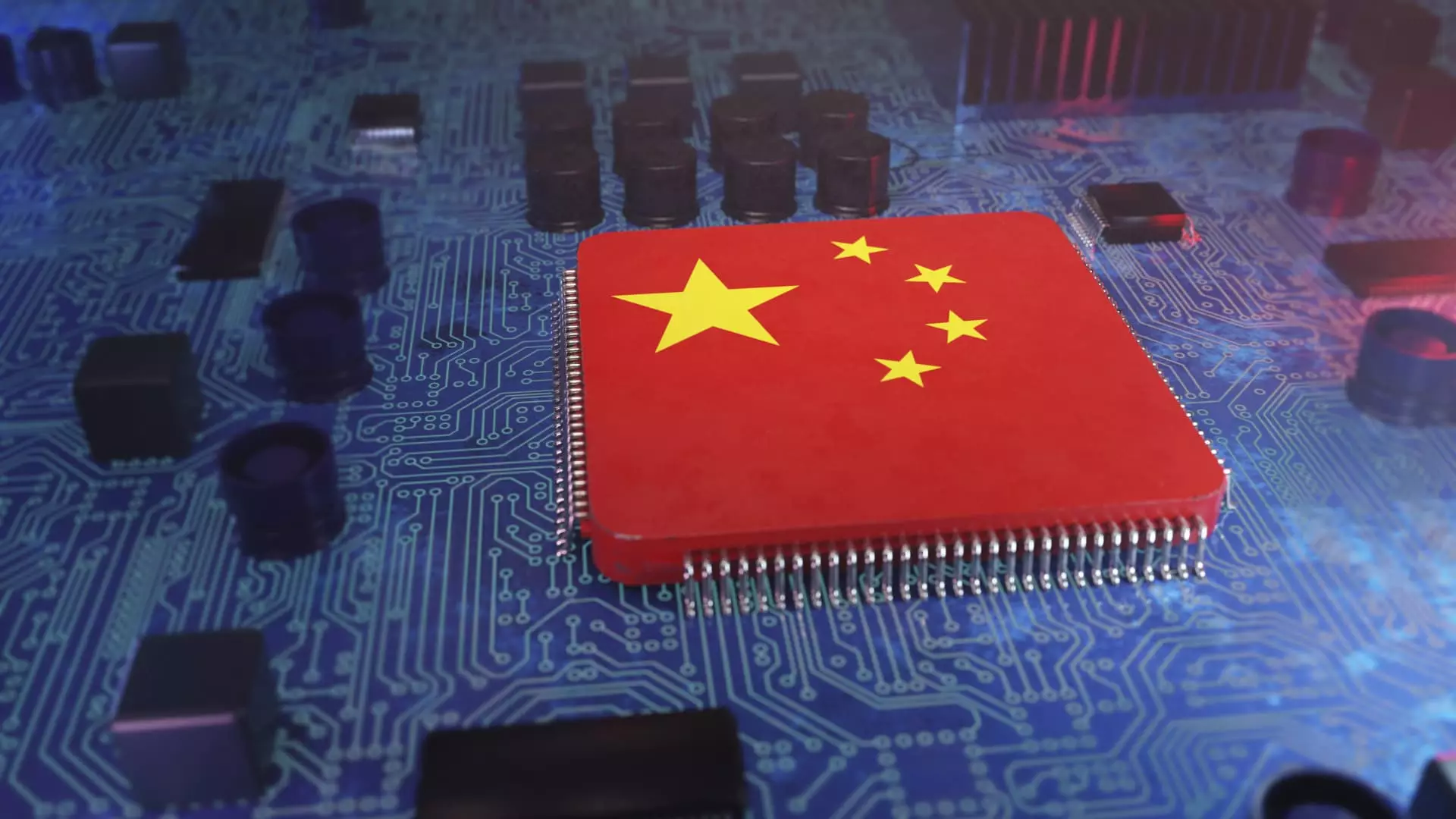In an age defined by rapid technological advancements, China is emerging as a formidable player on the global stage—particularly in the realm of generative artificial intelligence (AI). The backdrop of strained trade relations with the United States under the Trump administration has pushed Chinese companies to seek innovative technology solutions to navigate economic uncertainties. Unlike the tumultuous dialogue surrounding tariffs and trade, the focus on generative AI presents an uncharted territory brimming with promise for companies striving for growth and profitability.
The sheer number of AI product releases from Chinese firms in recent weeks is nothing short of remarkable. Companies such as Kuaishou and Tencent are at the forefront, unveiling tools that harness the untapped potential of AI. Kuaishou’s Kling, a tool designed for video generation, has already reported substantial revenue within months of its launch. Similarly, Tencent’s advancements in creating 3D visuals not only enhance the gaming experience but also reflect a broader application of AI in various industries. By leveraging generative AI, these companies are not merely responding to market demands; they are actively reshaping their business models and value propositions.
The Manufacturing Edge
China’s robust manufacturing sector provides it with a unique advantage in utilizing AI technology. Maxwell Zhou, CEO of DeepRoute.ai, emphasized the country’s capacity to gather extensive datasets through its myriad machines. This physical edge allows for the training of specialized AI models, opening the door for innovations such as autonomous delivery systems. The use of simple voice commands to facilitate delivery epitomizes how AI can streamline operations while providing users with a more intuitive experience.
Moreover, firms like Baidu are democratizing technological access by enabling individuals to create websites and simple games without needing extensive coding knowledge. This trend reflects a movement toward user-centered design, empowering developers and entrepreneurs alike. The ethos of “building with AI, not against it” is gaining traction and could lead to a more agile startup culture that thrives on creativity rather than traditional hierarchical structures.
Economic Resilience Through Innovation
In the face of economic pressure—exemplified by the looming specter of tariffs—AI stands as a beacon of resilience for Chinese businesses. Analysts like Ding Wenjie from China Asset Management suggest that AI applications could indeed buoy corporate earnings, buffering the adverse effects of economic slowdowns. This potential for enhanced profitability serves as an optimistic indicator, hinting that the economy is not merely stalling but has avenues for revitalization.
Goldman Sachs’ assessment of potential tariff impacts brings further clarity to the conversation. Should tariffs rise, the financial hit to Chinese corporations could be substantial. Nevertheless, the ability to implement AI-driven efficiencies may mitigate these impacts, allowing companies to emerge stronger despite external pressures. The narrative is clear: leveraging AI isn’t solely a response to trade tensions; it’s a strategic avenue for long-term sustainability and growth.
A Call for Global Collaboration
As the stakes rise in the competition of AI technology, the implications extend far beyond individual economies and corporate ambitions. Insights from thought leaders like Thomas Friedman highlight the necessity of global dialogue surrounding AI. The concept of collaboration in developing safe, ethical, and beneficial AI systems resembles historical talks on nuclear arms control, underscoring the magnitude of the decisions at hand.
The introduction of generative AI into the fabric of various industries poses questions of ethics, governance, and collaborative frameworks. For both the U.S. and China, prioritizing discussions about AI’s future could lead to shared standards that drive innovation responsibly. Rather than viewing each other through a lens of competition, embracing collaboration may well pave the way for groundbreaking advancements that benefit all.
In summation, the trajectory of generative AI in China demonstrates a proactive response to both economic challenges and technological opportunities. The nation’s ability to adapt, innovate, and potentially lead in AI offers a glimpse into what the future holds—not just for China, but for a globally interconnected economy that stands to gain from mutual advancements in technology.

